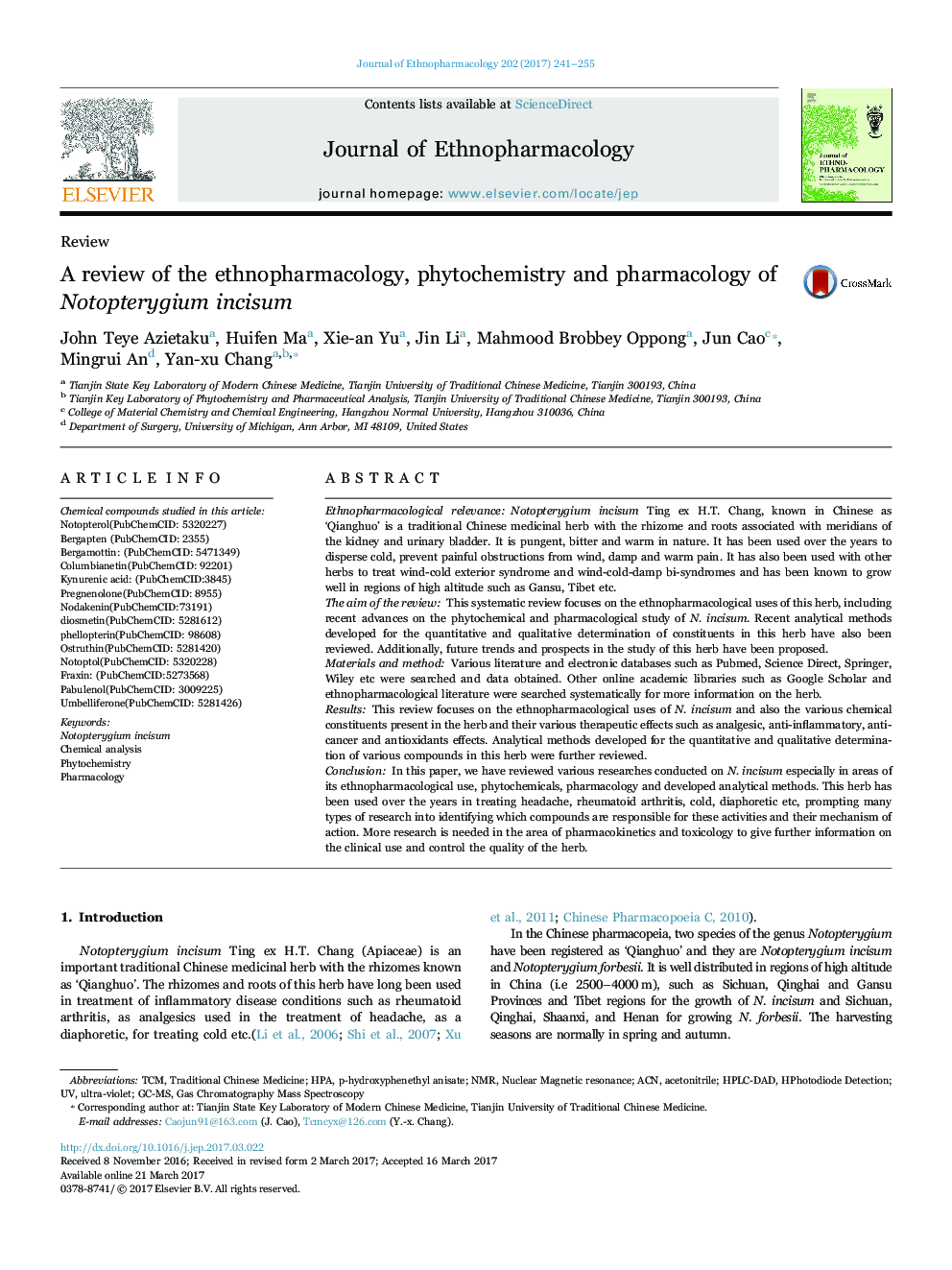| Article ID | Journal | Published Year | Pages | File Type |
|---|---|---|---|---|
| 5556095 | Journal of Ethnopharmacology | 2017 | 15 Pages |
Ethnopharmacological relevanceNotopterygium incisum Ting ex H.T. Chang, known in Chinese as 'Qianghuo' is a traditional Chinese medicinal herb with the rhizome and roots associated with meridians of the kidney and urinary bladder. It is pungent, bitter and warm in nature. It has been used over the years to disperse cold, prevent painful obstructions from wind, damp and warm pain. It has also been used with other herbs to treat wind-cold exterior syndrome and wind-cold-damp bi-syndromes and has been known to grow well in regions of high altitude such as Gansu, Tibet etc.The aim of the reviewThis systematic review focuses on the ethnopharmacological uses of this herb, including recent advances on the phytochemical and pharmacological study of N. incisum. Recent analytical methods developed for the quantitative and qualitative determination of constituents in this herb have also been reviewed. Additionally, future trends and prospects in the study of this herb have been proposed.Materials and methodVarious literature and electronic databases such as Pubmed, Science Direct, Springer, Wiley etc were searched and data obtained. Other online academic libraries such as Google Scholar and ethnopharmacological literature were searched systematically for more information on the herb.ResultsThis review focuses on the ethnopharmacological uses of N. incisum and also the various chemical constituents present in the herb and their various therapeutic effects such as analgesic, anti-inflammatory, anti-cancer and antioxidants effects. Analytical methods developed for the quantitative and qualitative determination of various compounds in this herb were further reviewed.ConclusionIn this paper, we have reviewed various researches conducted on N. incisum especially in areas of its ethnopharmacological use, phytochemicals, pharmacology and developed analytical methods. This herb has been used over the years in treating headache, rheumatoid arthritis, cold, diaphoretic etc, prompting many types of research into identifying which compounds are responsible for these activities and their mechanism of action. More research is needed in the area of pharmacokinetics and toxicology to give further information on the clinical use and control the quality of the herb.
